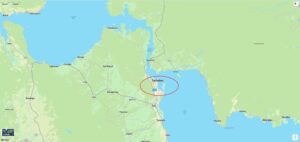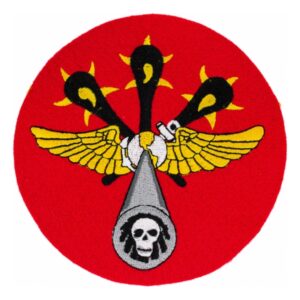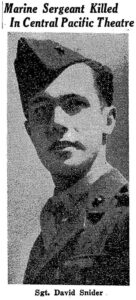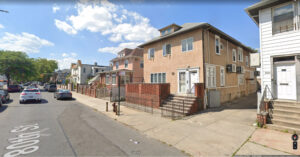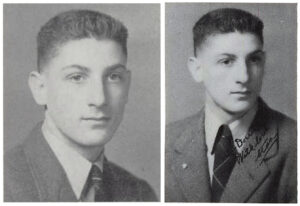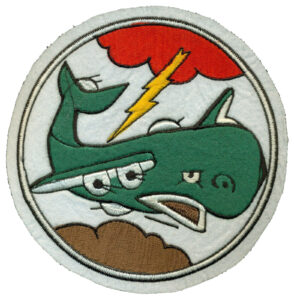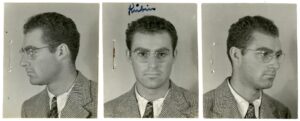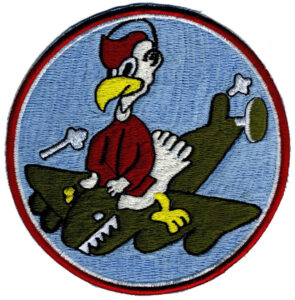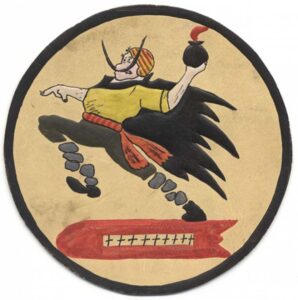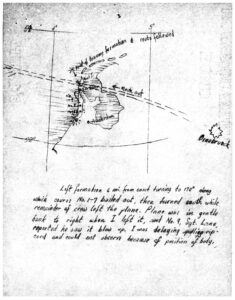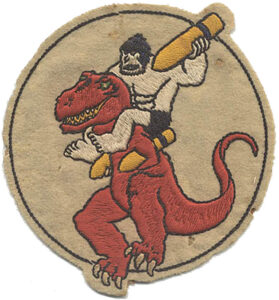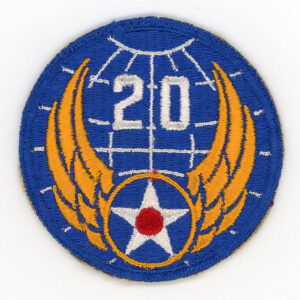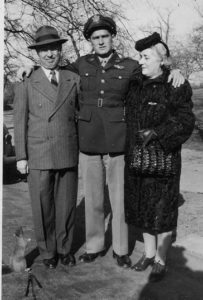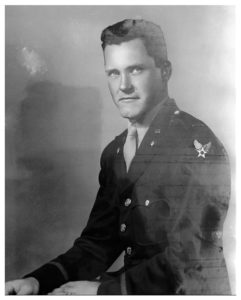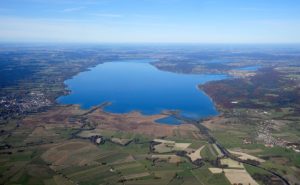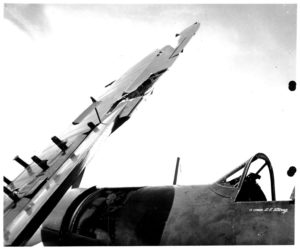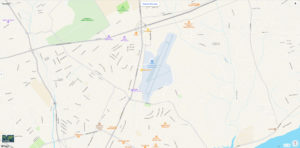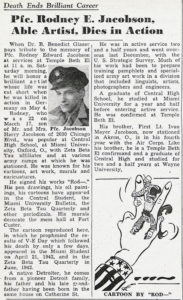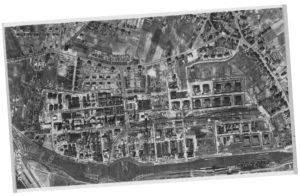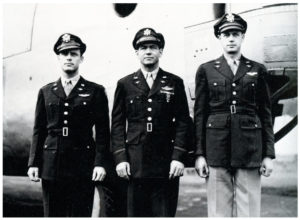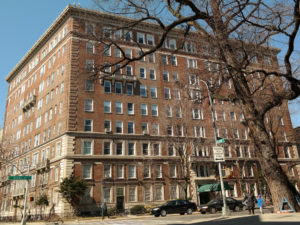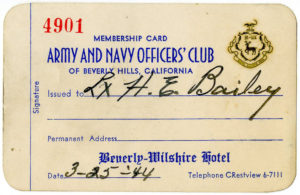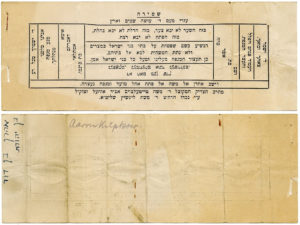It’s time that I returned to the “Times”. The New York Times, that is…
And so, here’s the latest post in my ongoing series covering the military service and participation of Jewish soldiers during the Second World War, based on news items published in The New York Times through the duration of that global conflict.
As such, this is (~ about ~) my fortieth post in the series.
Otherwise, a different angle: It’s my third post about Jewish-servicemen-in-The-New-York-Times – who, though they were the subjects of news articles published on different calendar days … in this case, Sgt. David Snider on March 4, 1945, and, Second Lieutenant Maurice David Kraus on March 8 of that same year … lost their lives on the same day: Tuesday, February 6, 1945. (Shevat 23, 5705) The prior two posts in this regard concerned Second Lieutenant Arthur Chasen and Sergeant Alfred R. Friedlander (December 23, 1944), and, Captain Paul Kamen, PFC Donald R. Lindheim, and PFC Arthur N. Sloan (April 20, 1945).
This post is unusual from another angle: Sergeant Snider was a Marine. Thus far, my only posts concerning Jews in the Marine Corps pertain to WW II Captain Howard K. Goodman, and, PFC Richard E. Marks, who served in Vietnam.
As before, this retrospective follows the same general format of my other “Jewish-soldiers-in-The-New-York-Times” posts. However, being that there’s such an abundance of information about the events of “this” day – February 6 of ’45 – I’m presenting information about these soldiers in two posts.
“This” post covers aviators.
A second post pertains to soldiers who served in the ground forces of the Allied Armies.
________________________________________
For those who lost their lives on this date…
Tuesday, February 6, 1945 / Shevat 23, 5705
– .ת.נ.צ.ב.ה. –
…Tehé Nafshó Tzrurá Bitzrór Haḥayím
May his soul be bound up in the bond of everlasting life.
________________________________________
Second Lieutenant Maurice David Kraus
United States Army Air Force
5th Air Force
5th Air Service Area Command
On Thursday, March 8, 1945, the following news item appeared in The New York Times:
Bomber Navigator Dead After a Crash on Leyte
The War Department has notified Mrs. Mary Braunstein Kraus of 482 Fort Washington Avenue that her son, Second Lieut. Maurice D. Kraus, 22 years old, a bomber navigator in the Army Air Forces, was killed Feb. 6 on Leyte in an accidental airplane crash. Lieutenant Kraus had flown thirty-one missions in the Southwest Pacific.
Born in New York City, Lieutenant Kraus was graduates from Townsend Harris High School and was a student at City College in 1942 when he joined the Army. He had been overseas since 1943.
In addition to his mother he leaves his father, Abraham Kraus, who is in the millinery and novelty business, and a sister, Miss Jean Kraus, both of the Fort Washington Avenue address. Miss Kraus is a Barnard College student.
Lieutenant Maurice David Kraus, whose name appears on page 368 of American Jews in World War II, was awarded the Air Medal and Purple Heart. Born in New York City on July 18, 1922, he graduated in Selman Field Class 43-08 (August of 1943) with serial number 0-805172.
Oddly, an account of the incident on Tacloban even now – in 2023 – is more conjecture than conclusion.
How so?
The Missing Air Crew Report (MACR) index name card filed for Lt. Kraus’ bears no MACR number.
The AAIR (Aviation Archeological Investigation and Research) database for 1945 is absent of any record – assuming such even existed – pertaining to a February 6, 1945 plane crash at Tacloban, or, Leyte Island.
Lt. Kraus’ IDPF (Individual Deceased Personnel File), which records his father’s business address as “Kraus Import Company, 15 West 38th St., Room 907, New York, 18, N.Y.”) lists his military unit as the 5th Air Service Area Command of the 5th Air Force, but is devoid of specific information about the Tacloban incident.
The unit history of the 5th Air Service Area Command, on AFHRA Microfilm Reel A7368, is remarkably vague about the February 6, 1945 plane crash, the Command’s history for February of 1945 (on frame 620, to be specific) stating, “A Depot #2 C-47 airplane loaded with priority freight and one passenger, crashed on takeoff at Tacloban Airstrip. All persons were killed and the plane was completely demolished.”
Thus, the mystery.
However, some rather circuitous research suggests that the plane’s pilot may (…may…) have been 2 Lt. Ralph C. Stava of Douglas, Nebraska, who was assigned to the 43rd Service Squadron of the 12th Air Depot Group. Quoting the news article “Lt. RALPH STAVA REPORTED KILLED” at Lt. Stava’s FindAGrave biographical profile (based on articles in the Omaha World Herald and Plattsmouth Journal):
“Edward F. Stava, Douglas, has been advised that his son, Second Lieutenant RALPH C. STAVA, was killed in a plane crash in the Leyte area of the Philippines February 6, 1945. This message was received here in the Plattsmouth Journal office Friday by the Kenneth McCarthy family.
“Born in Plattsmouth, Lieutenant Stava graduated from Plattsmouth High School in 1940 and attended Tarkio, Missouri College prior to going into the service. He entered the military shortly after the outbreak of the war and received his training in the south until graduation.
“Lieutenant Stava received his silver wings and was commissioned a Second Lieutenant status at the Marfa, Texas, AAF advanced two-engine pilot school. He was assigned to Gardner Field, Taft, California.
“Lieutenant Stava was sent to the Pacific area early last summer and has since been in action in that part of the war zone. He had been overseas seven months.”
Much like the IDPF for Lt. Kraus’, the IDPF for Lt. Stava has no specifics about the accident of February 6, 1945, whether in terms of technical information about the C-47, a list of the plane’s crew and passengers, or extracts from a report about the accident.
And so, the mystery remains.
Lt. Kraus, whose name appeared in an official casualty list published on March 8, 1945, and in the “In Memoriam” Section of the Times on February 10, 1946, is buried at Mount Hope Cemetery, in Hastings, New York.
This series of Mapple Apps Apple Maps, of larger and larger scale as you scroll down the page, show the location of the current Daniel Z. Romualdez Airport (formerly Tacloban Airfield) on Leyte Island, in the Philippines.
This first map shows Tacloban and Leyte Island in relation to other major islands of the Philippines.
Moving in closer, we see Tacloban relative to Leyte Island on the west, Samar Island on the east (separated by San Juanico Strait), and San Pedro Bay to the South.
Here’s the Daniel Z. Romualdez Airport in relation to Tacloban City.
And, a closer map view of the airport itself. Note that there is a single runway, oriented almost exactly north-south…
… which can be seen more clearly in this aerial (or satellite?) photo.
Approximately eighty years old, this photo (U.S. National Naval Aviation Museum photo 2001.294.006) show the Tacloban airfield in late 1944. In this image, the view is looking directly south along the eastern coast of Leyte Island, with San Pablo Bay to the left (west).
The man who may have been the pilot of the unidentified C-47: Lt. Ralph C. Stava. This image, via FindAGrave contributor Loren Bender, is from Stava’s FindAGrave biographical profile. The winged propeller cap insignia indicates that the photo was taken when he was an aviation cadet.
______________________________
Sergeant David Snider
United States Marine Corps
Bombing Squadron VMB-613
(Here’s the (un)official insignia of VMB-613, as designed by First Lieutenant James R. Edmunds III. As described at the squadron association’s website, “This … squadron insignia was set on a circular red background. Centered on the background were Naval Aviator wings with a globe and anchor. Above the wings were three maces. The main feature was a 75mm cannon tube with a skull in the muzzle, proudly denoting VMB-613’s unique status as only Marine Bombing Squadron to utilize the cannon-armed PBJ-1H in combat.”)
Sergeant David Snider’s story is known definitively, primarily through PacificWrecks.com and VMB-613.com.
Here’s his obituary, as published in the Times:
Marine Sergeant Killed in Central Pacific Theatre
Sgt. David Snider, Marine Corps, of 1981 Eightieth Street, Brooklyn, was killed Feb. 6 in the Central Pacific theatre, according to word received here yesterday. His age was 20.
Born in New York, he was graduated from Erasmus Hall High School and entered the Marine Corps in 1942.
He leaves a widow, Lenore; his parents, Mr. and Mrs. Isidore Snider; two brothers, Corp. Samuel Snider, Marine Corps, and Leon Snider, and a sister, Mrs. Ruth Barst.
Sgt. Snider was married, his wife, Lenore, residing at 1981 80th Street in Brooklyn. Interestingly – well, this was the United States of nearly-eight decades ago! – Lenore’s family lived “just down the street” from the Sniders, who resided at 2019 80th Street. David’s parents were Isidore (4/3/89-5/29/52) and Baseva (Sophia or Sophie) (Melamed / Blumberg) (9/10/89-9/21/71) Snider; his brothers Samuel and Leon, and his sister Ruth Barst. He was reburied at Riverside Cemetery in Rochelle Park, New Jersey on July 6, 1949.
His name appeared in a Casualty List published on 2/27/45, and can also be found on page 448 of American Jews in World War II, which notes that he was awarded the Purple Heart.
A photographer in Marine Corps bomber squadron VMSB-613 (a unit of Marine Air Group 31 of the 4th Marine Air Wing), Sergeant Snider (805866) was one of six men aboard PBJ-1H Mitchell #35275 – plane-in-squadron number “6”, otherwise known as the LOVE BUG – which was shot down by anti-aircraft fire during a bombing mission to Airstrip #2 on Ponape (Pohnpei) Island, “…one of the Senyavin Islands which are part of the larger Caroline Islands group,” an archipelago of small islands in the western Pacific Ocean.
Piloted by 1 Lt. William John Love (0-23765) from Vineland, Kansas (whose surname inspired the bomber’s nickname), the plane’s other crewmen comprised:
Co-Pilot: Stone, Thomas William, 1 Lt. – 0-27570 – Ringwood, Ok.
Navigator: Schwaller, John Richard, S/Sgt. – 292152 – Jefferson City, Mo.
Radio Operator / Gunner: Baumbach, Leland Edward, Sgt. – 819550 – Bryant, S.D.
Radio Operator / Gunner: Becker, John Anthony, Sgt. – 870393 – Boulder, Co.
Given the plethora of information about the LOVE BUG and her crew, rather than rewrite the crew’s entire story, I’ll instead present excerpts from PacificWrecks and VMB-613. Of particular and ironic note is the fact that Lt. William J. Love’s brother, 1 Lt. Robert E. Love, was also a pilot in VMB-613, the brothers and their crews – William J. Love’s “Crew No. 2”, and Robert E. Love’s “Crew No. 1” – alternately flying the LOVE BUG.
First, from Pacific Wrecks, quoting VMB-613 veteran Robert Yanacek
“Here is an interesting story, told to me by one of Bob Love’s radio-gunners, Lloyd McDaniel. Bill Love and his crew were not scheduled for the fateful raid. Bob Love and his crew were supposed to have been on the raid. Lloyd told me that at about dusk on February 5th, a Japanese sub was sighted. VMB-613 dispatched one aircraft to investigate. That aircraft was the “Love Bug” flown by Bob Love and his crew. The patrolled the area for a number of hours but couldn’t locate anything. The headed back to Eniwetok and did not land until after midnight. Because the arrived back so late, it was decided that they would not fly the strike on Ponape. Bill Love and his crew were then assigned to the mission. Bill Love and his crew left Eniwetok at 9AM in the “Love Bug” never to return. As Bob Love and his crew awoke on Eniwetok about noon, word came over the radio that there had been some problems.
Wartime History
On February 6, 1945 at 9:00am took off from Enewetak Airfield (Stickell Field) piloted by 1st Lt. William J. Love with Crew No. 2 armed with four 500 pound bombs on a strike mission against Palikir Airfield (Airfield No. 2) on Ponape Island. This formation included six PBJ Mitchells flying in three sections in pairs at an altitude of 8,000′. This PBJ was flying as the lead plane in the third section.
Over Ponape Island were thunderstorms and the PBJs had to change their planned attack. The first section found a hole in the weather and made a violent turn to get over the target but the second aircraft was not able to release its bombs. The second section was able to make a better approach and flew the length of the target and claimed several bomb hits but the second plane had three bombs hang up.
When the third section attacked, it swung wide to the left then circled to the right to attack Palikir Airfield (Airfield No. 2) from another angle. Over the target, medium and light anti-aircraft fire was intense. During the bombing run, this PBJ was hit by anti-aircraft fire in the bottom of the fuselage that entered the nose section fire from “a small gun atop Dolen Pahniepw” (Dolen Palikir) and crashed and burned on impact at Palikir. Soon after the crash one of the bombs still aboard exploded.
Second, VMB-613 has an extremely detailed account of the PBJ’s loss…
This comprises a transcript of the Aircraft Action Report, an account of exploration and research of the crash site in the early 2000s (two decades ago already…?!) by Stan Gajda, Richard D. Williams and Russell French, their efforts to definitively establish the fate and burial location of Sgt. Snider, and, a retrospective of the 60th anniversary memorial service (February 6, 2005) for the crew, in which the airmen were commemorated by Ambassador Suzanne K. Hale. Particularly valuable and moving are the many (very many!) photographs of the crash location and surviving fragments of 35275 (at least, the little that still remained as of 2001 and 2005) by Stan Gajda and Dick Williams.
Third, here’s an excerpt of the Aircraft Action Report from the website of VMB-613’s Association website:
Bombing Airstrip #2, Ponape Island
“The tail gunner of the first plane of the last section saw the right wing of the last plane collapse immediately outboard of the engine nacelle just as the pilot completed a wide turn and leveled out for his approach. The plane crashed just short of the runway exploding on impact with the ground and burning violently. In the opinion of the tail gunner no bombs had been dropped by this plane and no heavy A/A fire was observed although light and medium flak was intense. No cause for the collapse of the wing has been established. It is believed that all personnel aboard were killed in the crash and also that classified material carried in the plane would have been destroyed by the fire preventing its compromise.”
It’s my understanding that the LOVE BUG was VMB-613’s only aircraft lost to enemy action during WW II. The squadron’s only other combat fatality also occurred on the February 6 mission: Pvt. William M. Farley, serving as a navigator, was killed by a fragment from one of the 500-pound bombs dropped from his own aircraft, during the strike against airfield #2. Unfortunately, the Bureau Number of his PBJ is not listed.
Relevant information and photos can be accessed at the following VMB-613 Association web pages:
Aircraft Action Report
PONAPE CRASH-SITE: PAGE 1 – 20 photos (map and 19 photos of crash site)
PONAPE CRASH-SITE: PAGE 2 – 20 photos (fragments of wreckage discovered in early 2000s)
PONAPE CRASH-SITE: PAGE 3 – 8 photos (fragments of aircraft wreckage, Sgt. Snider’s matzeva and dog-tag, collective grave marker for the bomber’s other five crew members, and, a contemporary (early 2000s) photo of Susan (Stone) Clare, Lt. Stone’s daughter, who was two months old at the time of her father’s death.)
You can also view several images of Tory Mucaro’s 1/72 model of the LOVE BUG (web page from 2006) at Hyperscale.com.
Here’s the LOVE BUG in an image from the biographical profile of co-pilot 1 Lt. Thomas W. Stone, via FindAGrave contributor John T. Chiarella. Note that the only personal marking is the nickname itself, nose art being absent. Other VMB-613 Mitchell nicknames, all similarly painted along the muzzle port of the plane’s 75mm cannon, included, “…8-Ball, Betty Lou, Bung-Ho!, Fireball, Flaming Fury, Green Weenie, Ladders Up, Long Gone, Marlene, Miss-Carriage, and Pregnant Annie.”
This in-flight digital depiction of the LOVE BUG in flight is among five such images of the plane at WarThunder.com. These images clearly illustrates the camouflage and markings of VMB-613’s Mitchells: “…the three-tone color scheme adopted by the U.S. Navy in March of 1944 – sea blue, intermediate sea blue, and white. An unusual feature of this color scheme was that the sea blue on the upper surfaces was carried over onto the leading edges of the lower surfaces of the wing and horizontal stabilizer. The squadron number for each aircraft was stenciled in large white numbers within a dark-colored rectangular box below the aircraft’s Bureau Number on the vertical stabilizer. The purpose of this dark-colored rectangular box was simply to obliterate the original two-digit aircraft numbers used stateside while the squadron was training.”
Though not actually visible at the scale of this map, Ponape Island, the site of the LOVE BUG’s loss in combat, as one of the Caroline islands, would be “within” the location designated by the red oval.
Oogling in much (much) closer onto Ponape (Pohnpei) Island, Airstrip #2 is located near Palikir, in the island’s northwest.
Even closer: The LOVE BUG crashed at the location indicated by Oogle’s emblematic red pointer. In this 2022 CNES air (or is it satellite?) photo, it can be seen that Airstrip #2 has been replaced by a road, and, what appears to be a cluster of houses.
This topographic map of the LOVE BUG’s crash site, at a slightly larger scale than the preceding Oogle image, is via VMB-613 website. It can be seen that Lt. Love’s bomber crashed into a hillside due north of the northeast corner of the airstrip.
From the Voith Family Tree at Ancestry.com, this image, presumably from the late 20s or early 30s, shows David’s parents Isidor and Sophie, with (left to right) brother Leon, sister Ruth, Davey (David) himself, and brother Sam in front.
Another Voith Family Tree image. This photo, evidently sent by Sgt. Snider to his family, is captioned: “A. L. Brasington Florida A. P. Petko : Penna. J. L. Packard – Calif R. L. Stehman, Penna. F. J. Dudzik Illinois & Your One & only Davy”. Further research revealed that these men are:
Albert L. Brasington (Florida)
Andrew P. Petko (Pennsylvania)
James L. Packard (California)
Robert L. Stehman (Pennsylvania)
Frank J. Dudzik (Illinois)
… and … David Snider, having a bite in lower right.
David (right) and his brother Samuel. I’m not certain of the source of this image; it may be VMB-613.com.
David married the (almost literally) “girl next door”…
This 2022 Oogle Street View shows the former Snider home, at 2019 80th Street in Brooklyn.
Some home, different perspective: The view has been rotated to the left, showing the intersection of 80th Street and 20th Ave, with 1981 80th Street just to the right of the traffic light. Not much of a walk between houses, eh?
And so, we arrive at 1981 80th St., the home of Lenore – David’s wife. A “deep dive” into Ancestry.com revealed that Lenore – who may also have gone by the names Lenora or Leonora – was actually Lenore Ehrlich. Born on December 25, 1923, her father was David Levine; her sister Mary; her brother Alvin. She and David were married on May 9, 1944 in Brooklyn, their all-too-brief marriage spanning just a little over nine months.
From VMB-613 (specifically, “TRANSFER TO MCAF NEWPORT: PAGE 1“), this Marine Corps photo (from the David Snider Collection, c/o the Manning Brothers) is captioned, “REMMEL PARK: First Lieutenant Francis S. Manning, Sergeant David Snider, and an unidentified VMB-613 member enjoy an outing at Remmel Park in Newport along with their wives.” The obvious conclusion is that the lady to David’s left is his wife and at-one-time girl next door, Lenore.
Lt. Love and his four crew members were buried at Jefferson Barracks National Cemetery in Saint Louis, on June 10, 1949. This photo of the crew’s collective grave, at the FindAGrave biographical profile of Sgt. John R. Schwaller, is via FindAGrave contributor Jami.
Sgt. David Snider’s dog-tag: As described at VMB-613, “Immediately following the end of World War II, a number of squadron members went to Ponape in search of the crew of MB-6 that had been lost over the island on February 6, 1945. One squadron member recovered a dog tag from the body of Sergeant David Snider and brought it back to Kwajalein where it was given to Dave’s friend, Corporal Herbert E. Schwartz. [Served in Ordnance section of VMB-613.] Corporal Schwartz had hoped to return the dog tag to Sergeant Snider’s wife upon his return to the United States, however he was unable to locate her. Photograph: Marine Bombing Squadron Six-Thirteen (Courtesy of Herbert E. Schwartz)”
Here’s a last image from the Voith Family Tree: Sergeant David Snider’s matzeva, at Riverside Cemetery, in Rochelle Park, New Jersey.
______________________________
Flight Officer Stanley Louis Dietel
8th Air Force
509th Bomb Squadron, 351st Bomb Group
(Here’s the insignia of the 509th Bomb Squadron, as embroidered upon an A-2 flight jacket once worn by John R. Bluford of the 351st Bomb Group. The jacket was auctioned through invaluable.com on December 15, 2020. As shown in images at invaluable’s website, the insignia seems (?!) to have been sewn upon the jacket in an incorrect orientation. I’ve thus Photoshopped (rotated) the image to depict the insignia as designed, such that the bomb is pointing downwards to the left.)
Thus for the Pacific Theatre.
Now, on the world’s other side: The European Theater.
What’s striking on February 6, 1945, is that the majority of casualties this day, except for the men who were captured, occurred in incidents that did not involve direct and immediate contact with the enemy.
In the case of the 351st Bomb Group, after a mission to Targets of Opportunity at Eisfelde, Germany, a mid-air collision occurred between two B-17s of the 509th Bomb Squadron, claiming the lives of nineteen airmen. While circling the Group’s base at Polebrook, Northamptonshire, un-named B-17G 43-38080 (DS * Q), piloted by 1 Lt. Edward R. Ashton, was struck from underneath by B-17G 43-37595 (“RQ * O”) piloted by 2 Lt. Reinhold W. Vergen (thus that plane’s nickname: Vergen’s Virgins) while circling the base, tearing off the right wing of 38080. (“Clouds were down to 200 feet over the base when the planes returned, making landing difficult.”) Both aircraft crashed in a field near Lutton, east of Polebrook, with no survivors.
Lists of the crews of 43-38080 and 43-37595 can be found here.
Among the nine men aboard Vergen’s Virgins was bombardier Flight Officer Stanley Louis Dietel (T-129652), from New Brunswick, New Jersey. The son of Jacob (1885-1940) and Sarah (Ellenswig) Dietel (12/25/84-1958) of 191 Sanford Street – he also had six sisters – he was born in Highland Park on November 15, 1924.
Though a Missing Air Crew Report name index file card was created for F/O Dietel, no MACR was actually compiled for this incident.
F/O Dietel’s name appeared in a Casualty List published on March 15, 1945, and can be found on pages 230 and 231 of American Jews in World War II. He received the Purple Heart and Air Medal, the 351st Bomb Group website indicating that the sortie of February 6 was his tenth mission.
F/O Dietel is buried in Grave 14, Row 7, Plot F, of the Cambridge American Cemetery.
This composite image shows Stanley Dietel as he appeared in the 1943 (left) and 1945 editions of the Highland Park High School yearbook. The 1945 image is available via the Barwick Family Tree at Ancestry.com, and, Stanley Dietel’s biographical profile at FindAGrave.
This was unexpected. While reviewing F/O Dietel’s FindAGrave biographical profile, I discovered that his matzeva is a crucifix (as seen in this photograph by Skip Farrow) in accordance instructions in his Headstone Inscription and Interment Record, which lists his mother as his next of kin.
Both of his National Jewish Welfare Board Bureau of War Records biographical information cards verify that he was a Jew, his name also appearing on pages 230 and 231 of American Jews in World War II.
Though extraordinarily rare in terms of WW II casualties in the American military, this is not entirely unprecedented, as exemplified by the story of General Maurice Rose. Though I have no plans to access F/O Dietel’s Individual Deceased Personnel File, perhaps the explanation could be found amidst correspondence in that document.
______________________________
Second Lieutenant Morton H. Feingold
8th Air Force
549th Bomb Squadron, 385th Bomb Group
(The insignia of the 549th Bomb Squadron, from the American Air Museum in Britain.)
There’s a detailed and moving account concerning 2 Lt. Morton H. Feingold (0-838396), a co-pilot in the 549th Bomb Squadron of the 8th Air Force’s 385th Bomb Group, by Ron McInnis, his crew’s tail gunner, at IanMcinnis.com, under the title “Flying Backwards in ‘44”.
Mr. McInnis’ story reveals that during the February 6 mission to Chemnitz, Germany, after having bombed the target, the 385th Bomb Group temporarily became lost due to a combination of headwinds and jamming of aircraft navigational gear by the Germans. The formation leader thus decided to descend to 12,000’ while still over Germany, the squadron (and group?) eventually breaking into clear weather directly over the city of Cologne.
The Luftwaffe anti-aircraft gunners were ready: Flak, visually aimed, was fired directly into the 385th’s formation.
Struck by flak as Lt. Feingold piloted Miss Fortune (43-38118; XA * K) – he and aircraft commander Lt. Jerome Stiel alternated this task on combat missions – the aircraft suddenly went into a climb verging on a stall. After Lt. Stiel recovered control of the aircraft, it was discovered that Morton had been struck in his right kidney by a large piece of flak. No other crew members were injured.
Lt. Stiel immediately contacted Ninth Air Force Command, informing them of a medical emergency, and was directed to land at Florennes, Belgium. Lt. Feingold was removed from his seat by Miss Fortune’s navigator and bombardier and then given morphine, the crew’s flight engineer taking over as co-pilot. With a remarkable job of piloting Miss Fortune during an extremely challenging landing involving – which necessitated avoiding a parked B-17 and a bellied-in C-47 – Lt. Stiel brought his B-17 to a temporary and rapid halt as medics removed Lt. Feingold from the airplane, even as he avoided yet another B-17 making an emergency landing.
Taken to a hospital in Charleroi, Lt. Feingold passed away two days later. His injuries were too severe for survival.
Like Flight Officer Dietel, a MACR name index cards exists for Lt. Feingold, albeit with the notation “No MACR #”.
The son of Abraham and Rose Feingold and brother of Thelma, Lt. Feingold’s family resided at 3933 Gladys Street in Chicago, where he was born on April 15, 1924. Buried at Glen Oak Cemetery, Hillside, Illinois, on May 31, 1949, his name appears on page 98 of American Jews in World War II, which records that he received the Air Medal and Purple Heart. News about his death in combat appeared in The Chicagoan on July 11, 1946, while notice of his burial appeared in the Chicago Tribune on May 29, 1949.
You can read Ron McInnis’ account of the February 6 mission here, and with links to all five sections of his writings here.
This image of Miss Fortune / XA * K, is from B17FlyingFortress.de, via 385th Bomb Group.com. Given that the aircraft’s landing gear has been lowered and it’s dropping packages at minimal altitude, it would seem that it’s engaged in a food dropping mission over the Netherlands in late April of 1945, as described on page 230 of Roger Freeman’s The Mighty Eighth. Particularly noticeable is the distinctive late-war red checkerboard tail marking of the 385th Bomb Group.
Here’s Miss Fortune on the nose of 43-38118. This image is from the website of the 385th Bomb Group Association. According to Roger Freeman’s The B-17 Flying Fortress Story, this aircraft survived the war and ended up at Kingman, Arizona, by late November of 1945.
______________________________
Flight Officer Edwin London
8th Air Force
857th Bomb Squadron, 492nd Bomb Group
(Maurer and Maurer’s Combat Squadrons of the Air Force, World War II, states that the 857th Bomb Squadron had no squadron emblem. However, Battlefield.Store on EBay, describes this insignia as the emblem of the 857th.)
A non-combat incident claimed the crew of B-24H Liberator Gunga Din (41-29505) of the 492nd Bomb Group’s 857th Bomb Squadron.
The aircraft, manned by 2 Lt. Charles H. Edwards with his crew of eight, crashed during a night training mission at Lyon-Bron Airfield, France, during an attempted emergency landing on three engines.
Among the plane’s crew was bombardier F/O Edwin London (T-128655). Born in Manhattan on Oct. 9, 1923, he was the son of Louis and Sophia London, of 2483 Davidson Ave., in the Bronx. (Also at 138 Remsen St., in Brooklyn?)
Paralleling F/O Dietel, though a Missing Air Crew Report name index file card was created for F/O London, the card is absent of a MACR Number, implying that no such document was filed to report on Gunga-Din’s loss.
F/O London’s name appears on page 383 of American Jews in World War II, but this entry is absent of a notation indicating the receipt of a Purple Heart or any other award, suggesting that the Edwards crew had flown fewer than five – or perhaps no? – actual combat missions prior to the accident February 6.
F/O London is buried at King Solomon Memorial Park in Clifton, New Jersey.
Discovered via Sarah Jane Gabig’s comments in F/O Edwin London’s biographical profile at FindAGrave, this image of the Edwards’ crew – with F/O London standing second from right, rear – is from the U.S.A.A.F. Special Operations – 801 BG Carpetbaggers 492 BG website; specifically, the Edwards crew page.
The men in the photo are:
Rear, left to right
Edwards, Charles H. – 2 Lt. – Pilot – 0-719592
Burt, Merrill A. – 2 Lt. – Co-Pilot – 0-2062978
London, Edwin – F/O – Bombardier – T-128655
Roy, Gerard L. – 2 Lt. – Navigator – 0-2065189
Front, left to right
Matthews, James D. – Sgt. – Flight Engineer – 38506486
Mellotte, James O. – Sgt. – Radio Operator – 14136535
Stuckey, John T. – Sgt. – Gunner – 38389577
Boren, Mose C., Jr. – Sgt. – Gunner – 19106534
Cathers, Allan W. – Sgt. – Gunner – 42072365
Wolfersberger, R.G., Jr. – Sgt. – Gunner – 36466780
______________________________
______________________________
Some Came Back
Among the Jewish airmen who were casualties during combat missions on February 6, 1945, six men were captured; all in Europe. All returned to the United States after the war’s end in Europe. Four of these men served in the 8th Air Force, and two in the Italian-based 12th Air Force.
______________________________
______________________________
Second Lieutetant Harold Brod
Sergeant Alexander Jacobs
8th Air Force
728th Bomb Squadron, 452nd Bomb Group
(The insignia of the 728th Bomb Squadron, from Flying Tiger Antiques.)
Starting from England…
On a mission to Weisbaden, Germany, Lady Satan, B-17G 42-97175 (9Z * C) of the 728th Bomb Squadron, 452nd Bomb Group, commanded by 2 Lt. James L. Bayless, was struck by flak, setting the plane’s right inboard (#3) engine afire. As reported in Missing Air Crew Report 12240, “Shortly afterwards the engine fell off and the fire went out. Four chutes were seen from the A/C at 49-52 N, 07-49 E (by Gee Fix) at 1248 hours and then the A/C, losing altitude in a glide, disappeared into the clouds still under control.”
Eight of the bomber’s nine crew members survived as prisoners of war: Four men parachuted, and four rode Lady Satan to a crash-landing.
It turned out that the flak burst which destroyed the #3 engine also struck co-pilot 2 Lt. Harold E. McComb, almost severing his right leg below the knee. Unable to bail out or assist in flying the aircraft, he placed a tourniquet around his leg and remained in Lady Satan’s nose compartment, while uninjured navigator Lt. Harold Brod and wounded togglier Sgt. John Young moved to the bomber’s waist. From then on, Lt. Bayless alone piloted the badly damaged bomber.
According to Luftgaukommando Report KU 3649, at 1310 hours, Lady Satan made an “emergency landing” near Simmern, “behind” Dhaun, 1 km north of Kirn-Soberheim Street.
Placed in an ambulance and taken with Sgt. Young to a hospital in the city of Kirn, Lt. McComb was given a blood transfusion from the wounded togglier, his lower leg being amputated. However, he died during the evening.
As for those who parachuted from the B-17? Postwar, radio operator Sgt. Hubert Salyer reported that, “We left formation almost immediately. Shortly after leaving the formation (approximately 2-4 minutes) I bailed out of plane on orders from pilot. I was captured when I hit the ground, a small village named Deutschild. Two other crew members were also picked up here with me. I understand from Alexander Jacobs, the waist gunner on our crew, that he was captured at Bad Kreuznach, Germany.”
Navigator 2 Lt. Harold Brod (0-2065036) was born in Manhattan on June 27, 1924. His parents were Louis and Rose, of 718 Brunswick Ave. in Elizabeth, New Jersey, and (earlier?) 111 Benjamin Street, in Cranford, New Jersey.
Like the other six survivors of Lady Satan, Lt. Brod and Sgt. Jacobs spent the rest of the war as POWs, though the camps in which they were interned are unknown. Neither man’s name appears in American Jews in World War II, though Sgt. Jacobs’ name appeared in a list of liberated POWs in a Casualty List published on June 10, 1945.
This image of Lady Satan is via the American Air Museum in Britain.
The nose art of Lady Satan, from FindAGrave contributor and historian Jaap Vermeer.
This image, also via Jaap Vermeer, is from the FindAGrave page for 2 Lt. James L. Bayless, Sr. Though the image lacks a caption, one of the two doughnut-enjoying officers in the photo is presumably Lt. Bayless, who died in 1982.
The documents preserved in Luftgaukommando Reports can be as informative as they are striking. In this case, Luftgaukommando Report KU 3649, which covers the identification of Lady Satan, and, the identification and “processing” of her crew, includes the crew roster shown below, which – being in English – was not compiled by German intelligence!
I’d suggest two origins for this document. 1) It was created after the crew was formed, during training in the United States, 2) It was drafted just before the crew’s departure from the United States to England. In either case, it probably represents the Bayless crew as originally formed. The reason being, that Lieutenants John R. Jekutis and Maurice L. Waterson, Sr. were not aboard the aircraft when it was shot down, and Germans Intelligence was able to identity Lt. McComb and Sgt. Young as filling in for those two men’s crew positions, as evident in the notations in red in the left margin.
In any event, though it’s my understanding that flight crews were never supposed to carry personal documents, family correspondence, photos, memorabilia, or trinkets – whether military or civilian – on combat missions, a perusal of Luftgaukommando Reports reveals that this rule was often honored in the breach. Ironically, this can make a perusal of these documents surprising, moving, and (at times) haunting.
As shown here.
The document below, from KU 3649, is an “Angaben über Gefangennahme eines Angehörigen der feindlichen Luftwaffe” (Information about the capture of a member of the enemy air force) form for Lt. Brod.
Note that Lady Satan is (correctly) recorded as having “Notgelandet” (made an emergency landing), and Lt. Brod is stated to have “Verweigert Aussage des Geburtsdatums und letzten Wohnortes” (Refused to state date of birth and last place of residence.)
Also note… The diminutive but not-necessarily-innocuous “H” penciled to the right of Lt. Brod’s name and serial number.
Here’s Lt. Brod’s Casualty Questionnaire from MACR 12240. Note that Lt. Bayless landed the plane while alone in the cockpit, Lt. McComb (after having been given morphine) having been placed in the nose, while Sgt. Young (also wounded) and Lt. Brod remained in the waist.
And, below is the “Angaben über Gefangennahme eines Angehörigen der feindlichen Luftwaffe” form for Sgt. Jacobs.
The document correctly records that the Sergeant “Mit Fallschirm abgesprungen” (Jumped out with a parachute.)
Unlike the form for Lt. Brod, that for Sgt. Jacobs – despite the fact that both men’s dog-tags were stamped with the letter “H” – lacks a notation about the Sergeant’s being a Jew. However, comments about his physical description are penciled in the upper right corner.
Ironically; sadly, Lt. Brod, once again “Harold Brod”, twelve years later encountered what is known in literature, myth, and legend as an “appointment in Samarra”. To quote an example from the Talmud (Tractate Sukkah 53a):
Johanan stated, A man’s feet are responsible for him; they lead him to the place where he is wanted.
There were once two Cushites who attended on Solomon, and these were Elihoreph and Ahyah, the sons of Shisha, scribes, of Solomon. One day Solomon observed that the Angel of Death was sad. ‘Why’, he said to him, ‘art thou sad?’ — ‘Because’, he answered him, ‘they have demanded from me the two Cushites who sit here’. [Solomon thereupon] gave them in charge of the spirits and sent them to the district of Luz. When, however, they reached the district of Luz they died. On the following day, he observed that the Angel of Death was in cheerful spirits. ‘Why’, he said to him, ‘art thou cheerful?’ — ‘To the place’, the other replied, ‘where they expected them from me, thither didst thou send them!’ Solomon thereupon uttered the saying, ‘A man’s feet are responsible for him; they lead him to the place where he is wanted.’
As an executive (import-export manager) of the United Stated Plywood Corporation of Los Angeles, he was killed in a plane crash at Bulog Village, Batangas Province, Luzon, on October 11, 1957, while aboard a civilian aircraft whose four other passengers included Carlos P. Romulo, Jr., eldest son of Brigadier General Carlos Romulo. The aircraft was piloted by Paul Irving “Pappy” Gunn, famed WW II aviator and – at the time, as owner of the plane – General Manager of the Philippine Air Development Company. Strangely, while the Wikipedia entry for Pappy Gunn indicates that the plane crashed in a storm, a United Press news story dated October 11 states that the unidentified twin-engine aircraft exploded in mid-air, while an Associated Press story filed on the same day states that the aircraft ran out of fuel. (What?! Very strange.)
Though I’ve not been able to find any images of Harold Brod, his FindAGrave biographical profile includes this newspaper photo – probably from 1957 or ’58 – showing Beth L. Brod, his widow, donating a check to Columbia University in honor of her late husband. The text accompanying the image follows:
“ACCEPTING a check from Mrs. Harold Brod, center, for a scholarship in honor of her late husband, to be known as the Harold Brod Memorial Room at Columbia University, Grayson Kirk, president of Columbia, is pictured above, right, as Dean Lawrence H. Chamberlain looks on. The endowed scholarship room in a Columbia dormitory will be awarded annually to a deserving student at the college, who must maintain regular scholarship standards. The first award will be made in the fall. Mrs. Brod is the former Beth Drexler [Beth L. Drexler] of Larchmont, whose husband was killed Oct. 11, 1957, when the plane in which he was returning home from a business trip to Mindanao exploded 50 miles south of the Philippines. Mrs. Brod was awaiting him in Hong Kong and the couple, married in November, 1956, [Nov. 4, 1956] had planned a round-the-world trip. The five passengers in the plane, including Carlos P. Romulo, Jr., were all killed. Members of the class of 1947 at Columbia of which Mr. Brod was president, have also formed a Harold Brod Scholarship Committee to contribute to the scholarship established by Mrs. Brod. The thirty-three-year-old Mr. Brod was import-export manager for U.S. Plywood at the time of his death.”
Sgt. Alexander Jacobs (12178235), the bomber’s waist gunner, was reported in Luftgaukommando Report KU 3649 (Luftgaukommando Reports can be rather detailed!)) as having been captured at 1257 hours on Bad Kreuznach-Hackenheim Street. The son of Rubin (11/7/90-10/27/41) and Rose (Katz) (1887-4/6/75) Jacobs, his family’s residence was 2720 Grand Concourse, in the Bronx. Born in Manhattan like Lt. Brod – on February 11, 1923 – he passed away at the young age of 45 in June of 1968.
______________________________
Sergeant Martin Howard Rubin
8th Air Force
330th Bomb Squadron, 93rd Bomb Group
(The emblem of the 330th Bomb Squadron, from abqmetal’s ebay store.)
Staff Sergeant Martin Howard Rubin (32896697) was also captured on February 6.
A nose gunner in the 330th Bomb Squadron of the 8th Air Force’s 93rd Bomb Group, his B-24J Liberator 42-50505 (AG * E), Gremlin’s Roost, was shot down by flak during a mission to Magdeburg, Germany. Piloted by 1 Lt. Howard E. Jennings, seven of the bomber’s nine crewmen survived the loss of their aircraft, with waist gunners S/Sgt. Arthur S. Humphreys, and S/Sgt. Vance K. Jeffers being killed in action.
As reported in Missing Air Crew Report 12355, the aircraft left the 93rd’s formation 15 miles south of Alkmar, Holland.
According to German records (specifically, Luftgaukommando Report AV 1908/45) Gremlin’s Roost crashed 2 km north of Akersloot.
S/Sgt. William R. Barton and 2 Lt. Billie J. Holmes, respectively, describe the bomber’s loss in these accounts from MACR 12355:
On mission 6 February 1945 I was flying tail gunner in ship #880/S. After we had crossed the Dutch coast I heard over the interphone that #42-50505/E had been hit and was going down. At this time I saw 505/E make a right turn away from the main formation. The ship then straighten(ed) out and I saw three chutes come out. After flying straight for a few moments the ship started a steep climb and about ten seconds before the ship turned over on its back I saw one man come out of the bomb-bay. On the way down the ship blew up into three or four pieces all of which were on fire. I then watch(ed) one chute hit the water about three or four hundred yards from the coast, and another two chutes I saw land on the beach. I also saw the ship hit the ground about two minutes before the first chute hit.
On mission 6 February 1945 I was flying co-pilot in ship 880/S. As we were crossing the Dutch coast I saw ship #42-50505/E receive a direct hit behind #2 engine, the ship must have received hits on the flight deck, for at the time flares started shooting out of the ship. After the flares went off flames started coming out of the bomb-bay, then the ship turned away from the formation to the right. After a few moments it started climbing and I saw three chutes come out. After this we turned a little and this obstructed my view. At the end of the ship’s steep climb I saw the ship roll over on its back and start down. After 505/E had fallen about six thousand feet (approximately 10,000 feet off of the ground) it blew up into three or four pieces, all of which were on fire. At this point the entire formation made a turn to the left and here I lost sight of the ship.
Sergeants Barton’s and Lt. Holmes’ statements report that only three to four crew members escaped the mortally damaged bomber. However, Casualty Questionnaires in the Missing Air Crew Report suggest that S/Sgt. Vance K. Jeffers, left waist gunner, though mortally wounded by flak, was able to successfully parachute from the damaged plane. After landing, he walked several yards to the home of a Dutch family, in whose presence he died. S/Sgt. Arthur S. Humphrey, the right waist gunner, was killed aboard the aircraft and never left the plane.
Luftgaukommando Report KU 3672 contains a small plethora of documents that were in Sgt. Rubin’s possession when he was captured. As listed in the report, these include:
Booklet AAF Form No. 206
2 pages of immunization register
3 self-photos
2 receipts numbered 1993 and 1994
1 green card
1 N.C.O. Club card
1 identification card
Card 1 Bicycle Permit A-2323 and card authorizing transfer of bicycle
Slip of paper regarding spectacle prescription data
Calendar paper slips cut from newspaper
As for Sergeant Rubin, his mother Sarah lived at 68-35 Burns Street, in Forest Hills, New York. MACR 12355 reports that he completed 27 missions. His capture was reported in the Long Island Star Journal on April 19, 1945, while his name appeared in a list of liberated POWs published on June 22 of that year. His name – like other names reported for February 6, 1945 – is absent from American Jews in World War II, while the POW camp in which he was interned is similarly unknown.
Born in Brooklyn on September 26, 1924, he died on January 11, 1999.
Three photographs as one: This is a composite image of the three Escape and Evasion portraits carried by Sgt. Martin Rubin, found in Luftgaukommando Report KU 3672. Though such pictures are present in many Luftgaukommando Reports (well, at least it seemed (?!) that way when I reviewed the original physical reports at NARA, at least based on a cursory examination of the documents), only a miniscule number of these images bear an airman’s name. In such cases, as in the center image of Sgt. Rubin, his name was presumably written by a German investigator.
Among the many personal documents carried by Sgt. Rubin is this civilian personal identification card, from the Pioneer Suspender Company of Philadelphia.
______________________________
Sergeant Jacob Zuckerman
8th Air Force
849th Bomb Squadron, 490th Bomb Group
(The colorful nose art of B-17G 43-37894, BIG POISON, of the 849th Bomb Squadron, via the American Air Museum in Britain. According to InchHighGuy, the artist was Master Sergeant Jay D. Cowan and the photographer Captain Arnold Delmonico. (Perhaps the original image was Kodachrome?)
Another mid-air collision during the Chemnitz mission … this incident involving aircraft of the 388th and 490th Bomb Groups.
B-17G 43-37806, Miss Fortune, of the 561st Bomb Squadron, 388th Bomb Group, piloted by Lt. George Thompson, collided over England with B-17G 43-37894, Big Poison, of the 849th Bomb Squadron, 490th Bomb Group, piloted by Lt. John W. Hedgecock.
Miss Fortune crashed in the vicinity of Wicken, Cambridgeshire. Of the bomber’s nine crewmen, 1 Lt. Robert A. Wettersten was killed.
Big Poison crashed in the vicinity of Prickwillow, Suffolk, killing two civilians on the ground, along with ball turret gunner Sgt. Edward T. Tijan. The rest of the bomber’s crew parachuted to safety.
In Big Poison’s crew was Togglier Sergeant Jacob Zuckerman (32179227). The son of Rose Zuckerman, of 3150 Rochambeau Ave. in Manhattan, his name appears on page 478 of American Jews in World War II. He received the Air Medal.
______________________________
Second Lieutenant William Stanley Schoenfeld
Sergeant Hymie Mehlman
8th Air Force
850th Bomb Squadron, 490th Bomb Group
(EBay seller spsw1967 offers remarkably realistic, detailed, hand-painted reproductions of the insignia of USAAF, AVG, and USMC WW II combat squadrons, among which is this nice example of the 850th Bomb Squadron’s flak-evading mutt.)
Other combat losses not involving enemy action…
During the above-mentioned mission to Chemnitz, a mid-air collision occurred between two B-17G Flying Fortresses of the 490th Bomb Group’s 850th Bomb Squadron: Aircraft 43-38699, and 43-38167 (Lucky Strike), collided at an altitude of 17,000 feet, in the vicinity of Mittersheim, Moselle, France.
From B-17G 43-38699, piloted by 1 Lt. Marshall C. Dunn, there emerged three survivors: The bomber’s radio operator (S/Sgt. George A. Naifeh), and two gunners (S/Sgts. Dean R. Smith and Osvil F. Johnston). The crew (list from France – Crashes 39-45) comprised:
Pilot: Dunn – KIA
Co-Pilot: 2 Lt. Jack O. Philley – KIA
Navigator: 2 Lt. Helmer O. Baland – KIA
Togglier: S/Sgt. Donald B. Mayew – KIA
Togglier: S/Sgt. Edward J. Mulvihill – KIA
Flight Engineer: T/Sgt. Clarence H. McKinney – KIA
Radio Operator: S/Sgt. Osvil F. Johnston – Survived
Gunner: S/Sgt. Fred H. Horton – KIA
Gunner: S/Sgt. Dean R. Smith – Survived
Gunner: S/Sgt. George A. Naifeh – Survived
From Lucky Strike, piloted by 1 Lt. William Seymour Schoenfeld, there emerged four survivors, who presumably survived by parachuting from their B-17: Lt. Schoenfeld himself, 2 Lt. Raymond D. Schar (one of two co-pilots aboard the plane), flight engineer (Sgt. Frank M. Alexander, Jr.), and a gunner (Sgt. Irwin H. Wrampe). The crew (list also from France – Crashes 39-45) consisted of:
Pilot: Schoenfeld – Survived
Co-Pilot: Lt. Jack R. Owen – KIA
Co-Pilot: 2 Lt. Raymond D. Schar – Survived
Navigator: 2 Lt. Garry I. Leonard – KIA
Bombardier: F/O Bradell – KIA
Flight Engineer: Sgt. Frank M. Alexander, Jr. – Survived
Radio Operator: Mehlman – KIA
Gunner: Cpl. Drayton P. Mannies – KIA
Gunner: Sgt. Irwin H. Wrampe – Survived
Lt. Schoenfeld and his radio operator, Sgt. Hymie Mehlman, are most definitely listed in American Jews in World War II: The former on page 433, with the notation that he received the Air Medal and Purple Heart, and the latter on page 49, with the notation that he received the Purple Heart.
Lt. Schoenfeld (0-694266) was the husband of Charlotte Schoenfeld, and the son of Abraham and Antoinette (Weiss) Schoenfeld, of 4515 12th Ave., Brooklyn, where he was born on January 3, 1921 – just over a hundred and two years ago. He passed away on November 27, 2002. His name can be found on page 433 of American Jews in World War II, with the notation that he received the Air Medal and Purple Heart.
Cpl. Hymie Mehlman (19181734) was born in Manhattan on June 1, 1923. His parents were Charles (8/15/96-3/26/66) and Dora (Appelbaum) (4/30/96-2/1/79) Mehlman, and his sister Shirley Ann (5/12/30-12/12/06), who resided at 3546 Whiteside Street in Los Angeles. His brother Jacob (“Jack”) Bernard Mehlman (7/2/21-5/24/18) possibly lived at 2032 Palm Grove, also in L.A.
Cpl. Mehlman married Miriam Frances (Licker), of 801 North Mott Street, Los Angeles, on September 14, 1944 in California. The couple had one child, Bruce Raymond, who was born on June 28, 1945, almost five months after his father’s death; Bruce Raymond passed away on January 1, 2009.
Cpl. Mehlman, whose name appears on page 49 of American Jews in World War II, was awarded the Purple Heart, and is buried at Hollywood Forever Cemetery in Los Angeles.
In the image below, published on page 43 of Rank’n File – The Spirit of 44-D! (the class 44-D graduation album of the Rankin Aeronautical Academy at Tulare, California – via Army Air Forces Collection – Historical Documents from World War II), Cpl. Mehlman – at the time of the photo, Aviation Cadet Mehlman – stands at far left. Given his status as an Cadet, it would seem that he became a radio operator after having “washed out” of pilot training.
The other men – all members are Squadron C – are, left to right:
H.A. Oliver
J.J. Mehlhoff
E.E. Mecker
W.A. Majors
R.H. McMillen
At rear center in cap and scarf stands Instructor Bertram

______________________________
Second Lieutenant David Kames (Kaminkowitz)
8th Air Force
860th Bomb Squadron, 493rd Bomb Group
(From “100 Missions” (1945), here’s the emblem of the 493rd Bomb Group.)
(Though Maurer and Maurer’s Combat Squadrons of the Air Force, World War II, indicates that the 860th Bomb Squadron had no squadron emblem, Battlefield.Store on EBay, describes this insignia as the emblem of the 860th Bomb Squadron.)
A few of my prior posts mentioning Jewish airmen in the 8th and 15th Air Forces recounted incidents in which their aircraft, on missions to Germany, landed behind Soviet lines in Eastern Europe, due to fuel exhaustion and / or combat damage, with their crews eventually returning American military control. At least one such incident occurred on February 6, when un-nicknamed B-17G 43-38593 of the 493rd Bomb Group’s 860th Bomb Squadron, piloted by 2 Lt. Warren P. Whitson, Jr., with his eight crewmen, disappeared during the mission to Chemnitz.
As recorded in Missing Air Crew Report 12235, “Very little is known as to the whereabouts of A/C 593. At 1145 hours or approximately one half hour after target time, Lt. Whitson, pilot of A/C/ 593 radioed that he was proceeding to Russia. Later, at 1330, a message from 3D Air Division instructed Lt. Whitson to proceed to Motala (58 32 N, 15 02 E) in Sweden. Last position of A/X ascertained from radio message. – No further information on A/C 593 is available at this time.”
It turned out that 43-38593 landed behind Soviet lines at Oppeln, Germany, Lt. Whitson and his entire crew eventually returning to the 860th. The crew was as follows:
Whitson, Warren P., Jr. – 2 Lt. – Pilot
Morrow, Charles H., Jr. – 2 Lt. – Co-Pilot
Kames, David – 2 Lt. – Navigator
Flesher, Robert A. – 2 Lt. – Bombardier
McClure, Ronald W. – Sgt. – Flight Engineer
Magee, Robert S. – Sgt. – Radio Operator
Justice, Ora G. – Sgt. – Gunner (Ball Turret)
Kelly, Robey J. – Sgt. – Gunner (Waist)
Dyrud, Kenneth M. – Sgt. – Gunner (Tail)
Lt. Whiton’s crew resumed flying combat missions, only to be shot down by an Me-109 in B-17G 43-39070 (S) on the April 7, 1945 mission to Gustrow, as reported in MACR 13890. They were fortunate once again, for the entire crew survived, all returning to military control from mid-April to early May. With their date of return to American military control listed, they were:
Whitson, Warren P., Jr. – 2 Lt. – Pilot – 5/2/45
Morrow, Charles H., Jr. – 2 Lt. – Co-Pilot – 5/5/45
Kames, David – 2 Lt. – Navigator – 5/2/45
Flesher, Robert A. – 2 Lt. – Bombardier – 5/1/45
Rinaldi, Carmen C. – T/Sgt. – Flight Engineer – 5/2/45
Magee, Robert S. – Sgt. – Radio Operator – 4/15/45
Long, James C. – S/Sgt. – Gunner (Ball Turret) – 4/15/45
Belsinger, Robert H. – Sgt. – Gunner (Waist) – 4/15/45
Gardner, Thomas T. – S/Sgt. – Gunner (Tail) – 4/15/45
Meyers, James W. – Sgt. – Radio Countermeasures – 4/15/45
It can be seen that the officers (pilot, co-pilot, navigator, and bombardier), and radio operator (Magee), were identical on both missions.
Among Lt. Whitson’s crew was 2 Lt. David Kames (0-2060303), the bomber’s navigator. The location of the POW camp (camps?) where he spent the European war’s final month is unknown, but based on postwar reports by fellow crewmen, it seems that the men – who returned to Allied control from one week to nearly a month after having been shot down – were never at any once location for a truly lengthy interval.
Research via Ancestry.com revealed that David Kames was born on Feb. 17, 1919 – as David Kaminkowitz – to Philip and Luba (Kartt) Kaminkowitz. He retained that surname through October of 1940, when he signed his Draft Registration Card – and was thereafter known, in military and civilian life – as David Kames, under which name he married Martha Siegel (later his wife, “Molly”?) in 1941. The couple’s wartime address was 5908 20th Ave., in a place called Brooklyn.
David Kames passed away on April 15, 1996. Continuing with the theme of Jewish-soldiers’-names-not-present-in-the-1947-compilation-American Jews in World War II, his name is likewise absent from that volume.
As “David Kaminkowitz”, here’s David Kames’ portrait – via Ancestry.com – in the 1936 edition of the Erasmus Hall High School yearbook
Taken on January 4, 1945, here’s a portrait of the Whitson crew, with Lt. Whitson standing far left. Going by his facial features in the portrait above, it looks as if Lt. Kames is standing at far right, in the rear row. (USAAF photo B-62290AC – A10478)
This picture was taken on April 6, 1945, one day before the Whitson crew was shot down on the Gustrow mission. Once again going by “looks”, I believe Lt. Kames is fourth from left. The airman standing third from left is wearing a ushanka (ушанка) – the universally-recognized Russian fur cap – probably a souvenir of the crew’s sojourn in Soviet territory after the mission of February 6. Lt. Warren P. Whitson stands at far right as the crew collectively contemplates someone’s “short snorter“. (USAAF photo 62301AC – A10513)
From the American Air Museum in Britain, this image shows B-17s of the 860th Bomb Squadron, with 43-39070 – S – flown by the Whitson crew of April 7 – in foreground. Nicely visible are the red wing and tail stripes of the 493rd. (Photo UPL36820.)
In terms of information about this crew’s missions of February 6 and April 7, Missing Air Crew Reports 12235 and 13890 – which respectively cover those two dates – are confusing in organization, as most of the documentation for both MACRs pertain to the April 7 mission. This includes transcripts of the Group Intelligence Officer’s interviews of Lieutenants Flesher and Morrow. These accounts are fascinating in recounting the highly varied (extraordinarily dangerous and threatening, or, rather indifferent to ostensibly benign) attitudes of German military personnel and civilians towards Allied POWs just before the war’s end, and, the chaos and disorder prevailing in that country at the time. One interesting facet of Lt. Flesher’s account: Knowledge about the 493rd Bomb Group (down to aircraft serial numbers!) available to the Germans.
Transcripts of these transcripts follow below:
Lieutenant Morrow:
INTERROGATION OF CHARLES H. MORROW, 2nd Lt, AC, 0-775970,
860th BOMB SQUADRON,
ESCAPED PRISONER OF WAR.
On the 7th of April I was flying as co-Pilot with Lt. Whitson and crew on a mission to Gustrov, Germany. The formation was attacked by enemy fighters about three minutes before the I.P. I saw only one ME 109. The bomb bay of our aircraft was set on fire after an attack from 6 o’clock high by this plane. The A/C was flown out of formation and the bombs jettisoned. Shortly after this, the oxygen system caught fire and the bail out order was given. It is believed that the engineer, S/Sgt Carmen Rinaldi, was the first to jump. There were 10 men on the plane. However, only 9 chutes were seen and Rinaldi has not been accounted for at this date.
I landed in the vicinity of Neustadt. A civilian farmer was waiting for me when I landed. My left shoulder was fractured and I had a little difficulty in getting out of the harness. The farmer did not help, but rather threatened me. He started me off down a road, and about a mile along, I saw Lt Whitson who was in the custody of several civilian guards. They took us to a farm house, where we met Lt David Kames. A Luftwaffe captain came in and we were taken to an Airdrome at Neustadt where we were put in separate cells. It was 36 hours before we were fed or given medical attention. After this interval, we were given some bread and margarine. We stayed at this base for seven days. Since we were hungry, we asked the major in charge if we couldn’t be sent to a regular P/W camp. He agreed, and shortly thereafter, we were sent to the railroad station, but no train arrived. So we waited by the road for motor transport. None came. The two guards in charge agreed to send us to a nearby political camp where forty RAF and US flyers were being held. Again there was little to eat. Staying overnight at Beuerline, we moved the next day to a small village. For five days we were kept in a barn. Here, Red Cross packages ware given to us. After 5 days, the little group started on the road again, heading north toward Lubeck. Marches were about 25 miles a day. We finally wound up at Lebenz, about 40 miles southeast of Lubeck. We were all in fairly bad physical condition. The guards were rather brutal in urging the party along and appeared to be quite disgusted with the whole proceedings. There were roughly three guards to each man. The party, which started out composed of 43 men, arrived at Lebenz with some 60 officers and enlisted men; RAF, US and Canadians.
The evening of the arrival, the German major in charge of us, told Major Polleson, a US pilot of B-24s, that he was disgusted with us and was going to leave us where we were to be over run and picked up by the advancing British. Four German guards, volunteers, were left with us. The following morning, British tanks came in. Several British soldiers took over the German guards.
From there on in, the British took care of me as well as the other Allied P/Ws.
The Germans interrogated me the first night at Beuerline, asking for my name, rank, age and position on crew. Also if I was married, number of children, what part of the US I was from, my wife’s address. I refused to answer these latter questions, although my wallet which was taken from me, contained all the required information and also L 62. The interrogator asked about my bomb group and our assigned target. The interrogator was an officer and was not harsh or brutal during interrogation. He did not threaten, although he couldn’t understand why I didn’t answer all of his questions. No medical attention was given to me by the Germans who claimed facilities and attendants were not available because of many German wounded.
Lieutenant Flesher:
INTERROGATION OF ROBERT A. FLESHER, 2nd Lt., A.C.,
ESCAPED PRISONER OF WAR.
The assigned target for our Group was Gustrov, Germany, about; 85 miles Northwest of Berlin. The data was April 7, 1945.
Just after leaving the I.P. and while on the bomb run an ME 109, attacked our aircraft from five o’clock high. Our aircraft was hit in the bomb bay, probably by incendiary bullets; at any rate a fire was started in the bomb bay. We dropped out of formation, jettisoned our bombs (incendiary and G.P.), and exhausted both of our fire extinguishers. The fire continued to spread and it became evident that we could not put it out. After it appeared that the plane would explode at any minute the pilot gave the signal to bail out. I was the last one to bail out, and prior to leaving the plane I made an examination of the other positions to make sure that everyone had left. When it came my turn to leave the plane, the escape hatch had developed a malfunction and I was unable to get it open. My escape was made by diving through the bomb bay doors which were burning furiously; the metal was red hot. My face, ears and nose were burned, which necessitated medical treatment later.
My landing was made near Rastow, a small German town. Upon landing I was told that nine chutes had been observed coming from our plane. I was immediately gathered in by four German civilians who searched me for a gun and then took me into town to get the burgomaster. The burgomaster then marched me to the Wehrmacht headquarters, which was in a thick forest beautifully camouflaged.
S/Sgt. Thomas T. Gardner, tail gunner in our plane, and I were first taken before an officer who appeared to be the Commanding Officer and who became highly indignant at the burgomaster for bringing us there. He took the position that we should have been shot upon reaching the ground, as it appeared that our jettisoned bombs had hit a German school house, killing a number of German children. We were then stripped of our clothing and taken outside to be shot. At this time some Nazi official put in his appearance, asked us if we were Canadians, and when it developed that we were Americans he ordered the other Germans to give us back our clothes. We were than blindfolded, marched down the road a mile or so and put on a hay wagon where we were taken to a house which was used as a radio station. After spending the night in separate cells, we were taker back to the Headquarters, and then taken to the Deutsche Luftwaffe on a bus where we were treated extremely well, being fed roast beef, lettuce and other palatable articles of food. Some of the German airmen talked to me, were very friendly, in a low state of morale and ware extremely bitter against the Nazi party and against the S.S. troops. Since this was not an interrogation center and since they made no effort to get any information from me, it was my own impression that this was no “come on” gag, but was sincere.
That night were taken by train to Stendal, which is a Stalag interrogation center for airmen. I stayed there for four days and three nights in solitary confinement. We were fed two cups of soup and a piece of black bread per day.
On the fourth day, I was taken before a German Major for interrogation. He asked me my name, rank and serial number which I disclosed. He then attempted to get other information, such as my Group number, my Mother’s name, what air force I belonged to, name of our assigned target with I.P., whether it was an all-out effort on the part of the air force. I refused to answer these questions. He then stated that this was a mere routine examination and that he already knew the answers to the questions which he had propounded. He then reached in his desk and pulled out a paper with a picture of a B-17 with the 493rd Group markings, the number of our aircraft and our call number. After this he pulled out a book, turned to the page that was for the 493rd Bomb Group and showed me the number of all of our planes with call numbers, the names of most of the pilots and the squadron commanders. It is interesting to note that Major Sianis, former CO of the 862nd was not listed. He also had the name of Lt. Col. Fitzgerald. He then asked me how it was that Col. Helton was not with the 493rd Group any more. The interrogator then indicated on the map the route which we had taken, giving timings of fighter rendezvous, time of takeoff etc. He gave no indication as to where he obtained his Information, and the amount which he had at his finger tips was amazing. The interrogator was very friendly, offered me cigarettes and was respectful at all times.
After interrogation I was taken back to the cell for more solitary confinement. Colonel Crawford of the 446th Bomb Group made arrangements that night with a German Lieutenant interrogator for our escape. The Interrogator gave Col. Crawford the key to our cells, and that night we took off, 29 Americans and one R.A.F. navigator from England. The German Lieutenant and one German Sgt. went with us where we stayed at a barn for two days waiting on the approaching Americans. During this time the two Germans guarded us and prevented other Germans from detecting us, the understanding being that when the Americans rescued us we would take care of these two Germans and see that they were decently taken care of.
On April 13th we saw an advancing column in the distance but were unable to determine whether it was friendly or enemy. When an FW 190 flew overhead and was fired upon by these troops we knew that it was one of our columns. We were them rescued by the 5th Armored Division and the two Germans were later turned over to American forces with instruction that they should receive fair treatment.
______________________________
Sergeant Isidore Ifshin
Sergeant Norman Babe Lubinsky
12th Air Force
447th Bomb Squadron, 321st Bomb Group
(Via the 57th Bomb Wing, here’s the insignia of the 447th Bomb Squadron, from Vintage Leather Jackets.)
Moving south to Italian latitudes, Sergeants Isidore “Sonny” Ifshin and Norman Babe Lubinsky, both members of the 321st Bomb Group’s 447th Bomb Squadron, were captured after their B-25 Mitchell bombers were shot down by anti-aircraft fire during a mission to the Roverto Railroad Station.
Sergeant Ifshin (32821301), the flight engineer of B-25J 43-36240 (MAYBE) was among the bomber’s five survivors, all of whom escaped by parachuting from their damaged plane, which was piloted by 1 Lt. Earl H. Remmel (completed 67 missions) 2 Lt. Leslie J. Speer (completed 15 missions), neither of whom survived.
The pilots managed to keep their damaged B-25 under control long enough to give their crew a chance to escape, but were unable to leave the spinning and broken aircraft before it crashed into mountains below. Both men were killed when MAYBE crashed at Pannone, as reported in Luftgaukommando Report ME 2783.
As described by S/Sgt. Robert Cubbage in Missing Air Crew Report 12134, “I saw a ship after his right engine was feathered and it was sliding off to the left losing altitude. Four parachutes opened out of the ship. The plane then went into an inverted spin, tail down, to crash about half way up the side of a mountain at north end of Lake Gorda.
One of the chutes floated over the mountain peak and into the valley toward Roverto. The other three men went down on the side of the peak.”
2 Lt. John B. Allendorph reported, “I saw the ship go into a spin and almost immediately one chute opened behind it. Then I very short order, two more left the plane. It fell for a good length of time then two more chutes appeared, very close together. I didn’t see the plane hit although I watched it until I lost it against the mountainside. I am positive that there were five parachutes that came from the plane.”
Bombardier Lt. Darrel, in his postwar Casualty Questionnaires for Lieutenants Remmel and Speer, reported that, “Plane was very badly damaged by flak. Lt. Remmel managed to keep it from going out of control as long as possible but as we were preparing to leave, tail section and left wing broke up and plane went into spin.” “1st Lt. Harlan Tulley and T/Sgt. Isidore Ifshin [bailed out] from front hatch, T/Sgt. Bernard Guild and Sgt. Albert Barrett [bailed out] from rear hatch. All men bailed out immediately upon receiving order from 1st Lt. Earl Remmel, pilot.” Lt. Darrel also reported that Lt. Remmel, “Ordered all crew members to leave ship. Said he would hold it as steady as possible. … He told me he was not wounded just before I bailed out.” At the same time, Lt. Speer, “Was helping pilot hold ship while crew members bailed out,” and, “climbing from co-pilot’s seat preparing to bail out.”
Sgt. Ifshin was captured at 1500 hours, 3 kilometers north of Pannone, near Rovereto, by “3./SS Police-Regiment Schlanders”. According to notes at the Ifshin Batterman Family Tree at Ancestry.com, “Sonny bailed out and landed in a tree. … The Italians spotted him in the tree & had him jump to the ground, then turned him over to the Germans. He injured his ankle upon jumping from the tree, and was forced to march from Italy to Germany in the snow. … He had flown 60 missions.”
Sgt. Ifshin was eventually interned at Stalag 7A (Moosburg).
His parents were Morris (5/1/96-3/18/82) and Jacha “Yetta” (Kaplan) (9/15/00-6/25/82) Ifshin, his family residing at 500 Southern Boulevard. Born in Manhattan on September 8, 1924, he passed away on December 15, 2017.
His name – a repeating pattern here?! – is absent from American Jews in World War II.
A wedding portrait of Irving’s parents Jacha and Morris. This image, and the related photos that follow, are all from the Ifshin Batterman Family Tree at Ancestry.com.
Irving Ifshin, presumably photographed in the United States.
In this composite image, the photo on the left shows Irving Ifshin during training at Miami Beach, while the right image shows Irving and his mother Yetta in front of the family’s candy shop … at 500 Southern Boulevard in the Bronx?
MAYBE, at the 321st Bomb Group’s base in Corsica. The plane is a natural-metal (un-camouflage-painted) aircraft. Unfortunately, the plane’s individual identification letter – painted on the outer surface of its fins and rudders – isn’t visible in this picture.
As the bomber’s flight engineer, one of Sgt. Ifshin’s responsibilities would have been to have manned the aircraft’s upper gun turret, next to which he’s sitting in this photo.
Here’s most of the crew of MAYBE: At least four of the men in this photo were aboard the aircraft on the mission of February 6.
Rear, left to right:
2 Lt. Leslie Thomas Speer (Co-Pilot) – Killed
1 Lt. Earl Howard “The Fox” Remmel (Pilot) – Killed
1 Lt. Franklin Lloyd Darrel, Jr. (Bombardier) – Survived
Front, left to right:
T/Sgt. Harold R. Bauer (not aboard MAYBE on the February 6 mission)
T/Sgt. Ifshin – Survived
T/Sgt. Bernard Robert Guild? (Radio Operator) – Survived
This image, via FindAGrave contributor Patti Johnson, shows pilot Lt. Remmel as an Aviation Cadet. His FindAGrave biographical profile is here. Given that he’s listed in the Missing Air Crew Report as a Lieutenant, while his tombstone indicates his rank as Captain, I suppose the latter rank was a posthumous promotion.
This composite image of Co-Pilot 2 Lt. Leslie Thomas Speer is comprised of photos via FindAGrave contributors patootie (left photo), and, PRINCESSBARBI (right photo). The left image of Lt. Speer is from Army Air Forces Training Command 1943 Walnut Ridge, Arkansas – Class 43-E (May, 1943), while the newspaper article on the right, probably from March or April of 1945, reports on his (then) “Missing in Action” status. There are actually two FindAGrave commemorative pages for Lt. Speer: Here, and here.
______________________________
447th Bomb Squadron, 321st Bomb Group
A bombardier, Sgt. Norman Babe Lubinsky (39577232) and his crew in un-nicknamed B-25J 43-27730 – piloted by 1 Lt. Jackson R. Didson – had a more benign fate than the men of Maybe: 43-27730’s entire crew survived by parachuting. According to Luftgaukommando Report ME 2784, their bomber, shot down by Anti-Aircraft Battalion 454, crashed 3 kilometers west of Schio (south-east of Roverto … or … 7 ½ kilometers east of Roverto, at Piazza.
As one of three 447th Bomb Squadron B-25s lost on February 6, there was a degree of ambiguity in terms of a report of the planes’ loss, as reflected by Operations Officer Captain J. Maurice Wiginton in Missing Air Crew Report 12131. Namely, “Inasmuch as there were three aircraft involved (the entire lead element) and there occurred confusion and dispersion of the aircraft that followed, due to the loss of the lead element, it becomes difficult to disseminate all reports of returning crews. No one observer can give a complete sequence of happenings regarding each or all three aircraft in distress.
In light of the above, it is reasonable to conclude that the following did happen to plane 730: At approximately bomb-release point, the plane was hit by flak and immediately fell out of formation and dived to about 7000 feet. As the plane was in a dive two parachutes were seen to leave the plane. The plane leveled out and at about 7000 feet and one engine was feathered.
The last that anyone saw of it, it seemed to be under control and going west, just north of Lake Gorda. The formation tried to contact him by radio but failed.
The third 447th Bomb Squadron loss on February 6 was B-25J 43-27542, Superstitious Aloysius. Piloted by 1 Lt. Carl W. Cahoon, the plane’s entire crew of 6 survived, as reported in MACR 12133 and Luftgaukommando Report ME 2782.
The son of Paul I. (1/24/82-2/16/60) and Lena L. (Gordon) (12/15/85-1960) Lubinsky and brother of Louis and Sam, Norman Lubinsky and his family resided at 130 West Colton Ave., in Loma Linda, California. Born in Los Angeles on March 30, 1919, he passed away at the age of 93 on April 19, 2012. Though his name appeared in a list of liberated POWs published on June 12, 1945, his POW camp is unknown, and his name is absent (once again) from American Jews in World War II.
About a month before becoming a prisoner of war (and having his name recorded in Missing Air Crew Report 12131), Sgt. Lubinsky’s statement concerning the loss of a B-25 was recorded in MACR 11713.
Specifically, “On the mission on January 18th I was Bombardier on the plane flying on Lt. Murchland’s left wing. Just after coming off the target it was obvious that Lt. Murchland’s plane was in trouble. The first thing that I saw leave the ship looked like a bomb, but it was a delayed jump and the chute opened at about 1000 feet. In just a few seconds another came out and opened, and then two more blossomed out. Then it seemed a minute before the last man that I saw jump came out, and his chute opened immediately. While the last man that I saw jump was floating to the ground that the ship went into an 86 degree bank, made a right turn, and dived onto the bank of the river (Adige).”
There were four survivors from the six crewmen aboard this aircraft, B-25J 43-4069, piloted by 1 Lt. Robert K. Murchland. The identification and recovery of the aircraft and crew is covered in Luftgaukommando Report ME 2735.
______________________________
Leading Aircraftman Woolf “Willie” Nerden
England
Royal Air Force Volunteer Reserve
Number 140 Wing
In the Royal Air Force, Leading Aircraftman Woolf “Willie” Nerden (1440455), of No. 140 Wing Royal Air Force, was killed in the crash of Dakota III (C-47) KG630, piloted by W/O Peter M. Oleinikoff. The aircraft struck a hill at South Downs Folkington, East Sussex, in bad weather, eventuating in the loss of all 23 crew and passengers.
Born in Poplar, London, in 1921, he was the son of John and Hannah (Hirsch) Nerden, and brother of Joseph and Phillip, all of 2 British Street, Bow, London, E3. Buried at East Ham (Marlow Road) Jewish Cemetery, Essex, England (at Block U, Grave 29), the inscription on his Matzeva states, “Deeply mourned by parents – Brothers and relatives – Remembered by all”.
Notice of his death appeared in The Jewish Chronicle on March 2, 1945, while his name is recorded on page 218 of Volume I of Henry Morris’ We Will Remember Them.
You can read much more about his life, and the accident that claimed the crew and passengers of KG630, at Cathie Hewitt’s magisterial website Remembering the Jews of WW2. (Which incidentally features biographical records of Jews in the Merchant Navy and Royal Navy.)
This image of LAC Nerden’s matzeva is by FindAGrave contributor Mike Ganly.
______________________________
Matelot Radio (Aerial Wireless Operator / Gunner) Sylvain Isaac Boucris
France
Aéronautique Navale en Grande-Bretagne (A.N.G.B.)
Forces Navales Françaises Libres (F.N.F.L.)
Number 4 Wireless School, Medley, England
To conclude, yet another non-combat accident.
Matelot Radio (Aerial Wireless Operator / Gunner) Sylvain Isaac Boucris, assigned to No. 4 Wireless School, Medley, England / F.N.F.L. (Forces Navales Françaises Libres) – (Aeronautique Navale), of the aéronautique navale en Grande-Bretagne (ANGB), was killed in the crash of a Percival Proctor III (LZ595) during flight training over England. The aircraft – piloted by F/Sgt. Christian Henry Gerner – crashed at Oswestry, Shropshire.
Born in Mahdia, Tunisia, on February 28, 1925, Matelot Radio Boucris’ place of burial is unknown. His name appears on page 109 of the rare volume Livre d’Or et de Sang.
A detailed account of the loss of LZ595 can be found at BHAA (Borders Historical Aviation Archeology), in Ray and Rob’s moving 2004 essay “A Pair of Knitted Boots”.
This image of Matelot Radio Sylvain Isaac Boucris is from page 109 of Livre d’Or et de Sang. His family origins and place of burial are unknown.
I was very (very!) fortunate to access and scan the first (and only) edition of Livre d’Or et de Sang. This copy is from the University of Toronto.
Exactly four months after the crash of Proctor LZ595, pilot F/Sgt. Christian Henry Gerner’s father, Chris H. Gerner, sent the following letter to Officer Commanding, Records, Department of Air, in Melbourne, requesting information about the accident that claimed the life of his son and Matelot Boucris… The letter was found in F/Sgt. Gerner’s Casualty File, via the National Archives of Australia.
This image of box-art for the Dora Wings plastic model company’s 1/48 plastic model of the Percival Proctor depicts the aircraft in RAF colors, and is probably representative of LZ595 as it appeared in 1945.
Here’s a nice video of a Proctor in flight – “Percival Proctor and Mew Gulls – Shuttleworth Vintage Airshow” – circa October of 2022, at the YouTube channel of Patrick Clear.
References
Four Books
Dublin, Louis I., and Kohs, Samuel C., American Jews in World War II – The Story of 550,000 Fighters for Freedom, The Dial Press, New York, N.Y., 1947
Freeman, Roger A., The Mighty Eighth – Units, Men and Machines (A History of the US 8th Army Air Force), Doubleday and Company, Inc., Garden City, N.Y., 1970
Freeman, Roger A., The B-17 Flying Fortress Story: Design – Production – History, Arms & Armour Press, London, England, 1998
Morris, Henry, Edited by Gerald Smith, We Will Remember Them – A Record of the Jews Who Died in the Armed Forces of the Crown 1939 – 1945, Brassey’s, United Kingdom, London, 1989




